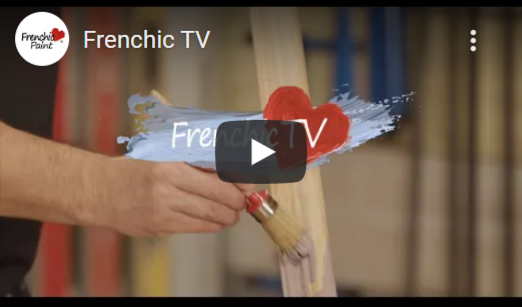How to Prepare and Paint Fence Panels
Fence panels are a staple feature in front and back gardens up and down the UK. Painting them is a great way to transform their appearance or just rejuvenate them, as well as adding some much-needed protection for the timber.
In this post, we’ll outline how to prepare and paint fence panels, with help from our brand ambassador, Craig Phillips. In the video above, he demonstrates how it’s done with three different types of fence panels:
- Picket fencing with wooden posts
- Close board fencing
- Standard six-foot wide fence panels with concrete posts
What you’ll need
- A good jet washer (if you have one available)
- A palm sander for large areas of wood
- A detail sander for edges or smaller areas of picket fencing
- Wire wool brushes
- Scrubbing brushes
- Safety goggles and a dust mask
- A suitable weatherproof paint – Craig uses Frenchic Greyhound and also Smudge from the Al Fresco range
- Concentrated Sugar Soap for cleaning
- A suitable paint brush, roller or handheld paint sprayer
- A paint can opener and something to mix it with
- Polythene sheeting, in case of rain
- Dust sheets or cardboard to protect from drips, spillages or overspray
Preparing your fence panels
As with any paint job, preparation is key. It’s always worth spending an extra hour or two getting preparation right. Not only will it make your fences look better, but it will also ensure better paint coverage and a super-durable finish.
Cleaning
Start off by using a stiff, hard brush to remove any loose debris, mud, moss and cobwebs from the surface you intend to paint.
Next, you’ll want to a good-quality cleaning solution to remove dirt and grime. Mix one-part Sugar Soap with ten-parts warm, soapy water, before scrubbing the whole fence and posts with a brush.
If you have one, cleaning down with a powerful jet washer is a good idea too. This is the easiest way to remove the green algae that often builds up on fences. Otherwise, make sure you scrub this by hand and rinse off. This will also removes any loose, flaking paint that you may not have noticed.
Once you’ve finished cleaning your panels, you’ll need to leave them to dry for at least 3-4 days. The timbers must be dry before painting to ensure a long lasting finish.
If it starts to rain, it's best to cover your fence panels. Drape some polythene over them to keep them dry. The moment it stops raining, remove them to let the wind at them, which will help them dry quicker.
Sanding down
Now the timber is clean and dry, you can give your fence a good, firm wire brushing. Follow that with a heavy sanding to start with. Once you’ve got rid of all the splinters and rough edges, change your sanding pads to a lighter grit and lightly sand all the surfaces one final time. Don’t forget to wear your protective goggles and face mask while doing so.
That’s your preparation complete. The timber is dry, sanded down, and you’re ready to start painting. Remember to put some dust sheets or cardboard on the floor to avoid paint dripping, spilling or spraying where it doesn’t belong.
The final step before painting is to do a weather check. Needless to say, you’ll want the weather to be dry for at least a day with no moisture in the air, so you have time to paint sufficient coats on your fence and let them dry. On top of that, you only want to apply the paint if the temperature is between 10°C and 35°C. So, late spring and summer are the best times of the year in the UK.
Painting your fence
To start, make sure you give the paint a really good stir once opened. Next, there are three methods you can choose from when painting your fence:
- Brush
- Roller
- Handheld paint sprayer
To paint your fence with a brush, you can simply take it from the can with your brush and apply it directly onto the surfaces. Alternatively, you can use a roller. Pour a small amount of paint into your tray. Get a fair amount onto the roller, then apply to the fence. This method is much quicker when you’re painting larger areas, especially flat sections.
The third and final option of application is using your handheld paint sprayer. For this method, you will have to dilute the paint down. This is especially important when you’re using a good quality paint like Frenchic, which is thick and creamy. Pour around 10-15% water into your paint, then use a paint stirrer to give it a good stir up. You’re looking for a consistency that runs smoothly off your stirring stick as Craig’s does in our video.
Pour the diluted paint straight into the reservoir of your paint sprayer, then connect it to the sprayer. You’ll also want to put on your safety goggles and mask before you start spraying.
If you’re using a sprayer for the first time, it only takes a few minutes to get used to. Hold the nozzle about 4-6 inches away from the surface and continuously move it up and down or side to side, depending on the grain of the wood. You will get a small amount of overspray, but your dust sheets or cardboard will take care of that. For taller fence panels, you can hold a piece of cardboard over the top of fencing to stop paint spraying any further.
Which method is best?
There’s something oh-so satisfying about painting with a brush when you’re using a good-quality paint. But when you’ve got a large area to cover, a paint roller or sprayer really can save you a lot of time.
The same is true if you have a lot of slats to paint on a picket fence. While some people think that picket fencing is the quickest type of fence to paint, every vertical slat has four sides, along with horizontal arris rails and posts.
This structure makes it the most time-consuming type of fence to paint, which is why a paint sprayer is so handy. That said, a brush may be required to cover all of the little recesses and corners.
What about concrete posts?
If you’re painting fence panels with concrete or wooden posts either side, you’ll need to decide what you’re doing with the posts. Here are the three options:
- Mask over them with masking tape to protect them from paint – especially if you’re using a handheld paint sprayer.
- Paint over them and leave them the same colour as the fence. The Al Fresco range can be used on concrete as well as wood, so you’ll still get durable, smooth coverage.
- Choosing a multi-surface paint also means you can paint over them once dry with a different colour. In the video, Craig uses Greyhound for the fence with Smudge on his concrete posts.
Rate of coverage
Another important consideration is the rate of coverage. If you apply the paint too thinly, durability may be affected. To ensure the surface is sufficiently covered, you should always check the tin for the recommended rate of coverage.
For example, a 750ml tin of Al Fresco will provide a single coat of up to 12.5 square metres. For a durable finish, two coats are required. So, the 750ml tin should provide full coverage for around 6 square metres on non-porous surfaces.
However, porous surfaces like bare wood or MDF tend to absorb paint, meaning additional coats are required to achieve a durable finish. In this case, your 750ml tin will provide less than 6 square metres of full coverage.
Drying and recoating
Once you’ve painted the first coat of your fence, leave it to dry for 2 hours before applying a second coat. That’s typically enough for a brush or roller, though you should always follow the instructions on the tin.
If you’re using a sprayer, you’ll need a third coat because of the paint being diluted. However, this also means the paint will dry a lot quicker. You can expect to wait a little less than 2 hours between coats.
Once all coats have been applied, you should leave the paint to dry for 2-3 weeks until it’s fully cured.
Painting your fence panels with ease.
At Frenchic, we want to make it easier and more enjoyable to prepare and paint your fences. Alongside our instructional guide and video, our Al Fresco range of durable, weatherproof, UV resistant chalk paint has been specially developed to protect and transform garden items – as well as indoor furniture.
Choose from a long list of beautiful colours – and don’t forget our brushes, stirring paddles and sugar soap to make preparation and application even easier.







